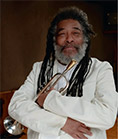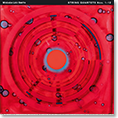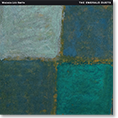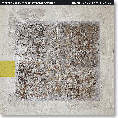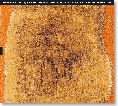MOTHER TONQUE
The Juhani Aaltonen Trio is the happy outcome of Juhani Aaltonen joining in 2001 SUHKAN UHKA, the twelve-member ensemble founded by bassist Antti Hytti and saxophonist Jone Takamäki. At that time, Aaltonen actually thought that his days playing freely improvised music were largely over and only after much persuasion decided to join the ensemble comprised of musicians twenty-to-forty years his junior. Although Aaltonen had known drummer Tom Nekljudow ever since the early 1980s, when Nekljudow studied with composer and percussionist Edward Vesala, and also knew bassist Ulf Krokfors from various connections, the three played together for the first time in SUHKAN UHKA.
It did not take much more persuasion to get Aaltonen to agree to start a trio with Krokfors and Nekljudow. For Aaltonen, the trio presented an opportunity to return to his roots in free-flowing improvised music whereas for the relative youngsters, Krokfors and Nekljudow, the opportunity to play regularly with the old master was truly a dream come true although, for improvising musicians, the term "regularly" is as much of a relative concept in Finland as it is elsewhere. Earliest performances of the trio took place in the spring and summer of 2001 but the longest continuous string of performances came in the fall of 2002 with a concert tour organized by the Finnish Jazz Federation. The concert at Kanneltalo, a medium-sized concert hall in Helsinki´s Kannelmäki that regularly features improvised music, took place towards the end of that nine-concert tour and featured the trio at its peak form, relaxed and confident. An almost full house of warmly receptive and attentive audience and the good acoustics of the hall certainly also played an important part in the success of the music. More than half of the material played at the concert is included on this record.
Despite his forty-year career, Aaltonen has only led his own groups very infrequently. In part, this has been a result of being the favored soloist of some of Finland´s most distinguished jazz composers - Henrik Otto Donner, Heikki Sarmanto, Edward Vesala and others - and being able to make his mark through their music but, in part, it has also been a reflection of his personality. Rather than battling with larger egos for the limelight it has been easier for Aaltonen to take the backseat. Also, particularly in the early years of his career, Aaltonen was almost painfully shy and did not cherish the idea of stepping into the limelight for any purpose other than to play his instruments. However, that is now a thing of the past: leading the trio comes naturally and even on stage Aaltonen is relaxed and clearly takes pleasure in communicating with the audience not only musically but also verbally. For Aaltonen, leading is about setting an example and giving others their own space rather than about asserting one´s authority over the others.
Those who have followed Aaltonen´s playing over the years will notice how it has changed and become more relaxed. In this trio, the musicians play the music that they love - their mother tongue as Aaltonen likes to call it. All three musicians are on the same wavelength and so experienced and knowledgeable in their music that playing together comes easily. There is no fear of "mistakes" or missing cues, no criticism for doing something unexpected. In fact, those occasions are the salt of the music. The focus is on collective expression and feeding off on each others´ playing rather than on intricate arrangements and mapping out performances ahead of time. The music is created "in the moment." Every performance brings something new to the trio´s music.
Aaltonen´s playing has always been highly emotional. Sometimes, it has seemed that the outpouring of emotions has been almost too much to handle both for Aaltonen himself and for his audience. Yet, his music has never been aggressive. Through music, Aaltonen has addressed many of his own fears and disappointments in life but the music has always retained its rich melodic content and loving feel to it. Although Aaltonen listened early in his career to the music of saxophonists John Coltrane, Albert Ayler, Eric Dolphy, Archie Shepp and many others and toured and recorded with saxophonist Peter Brötzman already in the 1960s, he has always had his own approach to free improvisation that reflects his personality.
In recent years, the "preaching" quality in Aaltonen´s playing has become more and more pronounced and has been combined with increasing spiritual clarity. Not in the sense of imposing his beliefs on others but rather as a confessional, an expression of faith. Since the late 1980s, Aaltonen has regularly performed in the religious context and considers his religious awakening as a major factor behind his current music. Peace and clarity have increasingly taken the place of the outpouring of anxious emotions that used to dominate his playing in earlier years. Also, despite being largely self-taught as a musician, Aaltonen has developed a deeper understanding of his own playing. This is not to say, however, that the music has become soft. If anything, it is now stronger and more compelling than ever.
Aaltonen says that, for him too, the trio is a fulfillment of his dreams. The camaraderie and co-operation among the members of the trio has been a rare experience even when contrasted against his long career. With Tom Nekljudow creating a rich rhythmic carpet under the band and Ulf Krokfors´ strong, masculine bass offering a constantly shifting grounding for the music, Aaltonen finds it easy to concentrate on what comes most naturally from him - free improvisation with few boundaries.
Aaltonen himself has said the following about playing with the trio:
"From the very first times that we played together, I knew that this trio was something special. After only a few performances, we went through that rare transformation from three musicians just playing together to the three of us playing as a group, a unit reaching a whole new level of communication. I feel that this trio truly represents a case of the whole being more than the sum of its parts.
The music flows so easily among the three of us that playing together is a constant joy. I hope that at least some of that joy is also communicated to the listener through this recording."
Aaltonen says that he, like the old masters of jazz, likes to "tell stories" with the music. He thinks of music as visual images and associations that give the music its meaning rather than just playing notes based upon abstract ideas or pre-set formats. Similarly, Aaltonen is not interested in engaging in musical "small talk" - playing standard phrases to fill the space - something that so many jazz musicians are willing to settle for. For Aaltonen, music does not represent a way to just pass the time or a theoretical problem looking for solution but rather comes from the heart as a representation of deep-felt emotions. Listening to this music - both live and on this recording - allows the audience to share in those emotions and, maybe, use the music as a key to opening some of their own closed doors.

